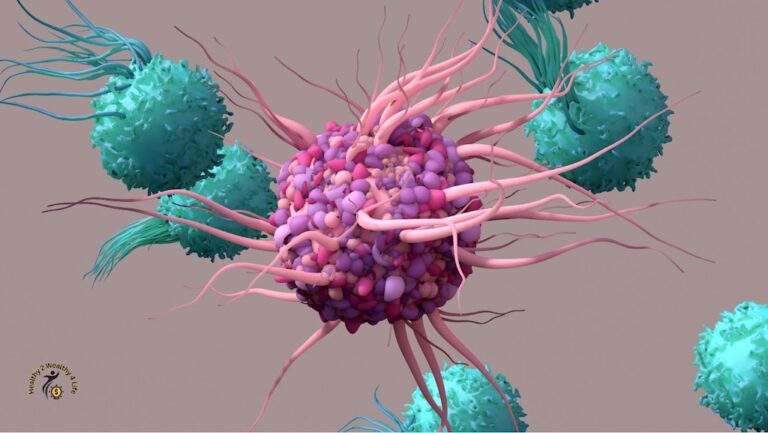How to Lower LDL Cholesterol Levels Naturally
In the quest for better health and longevity, managing cholesterol levels is paramount. High levels of LDL (Low-Density Lipoprotein) cholesterol in the bloodstream can lead to a range of cardiovascular issues. However, you can take proactive steps to lower your LDL cholesterol levels naturally. In this comprehensive guide, we will explore proven methods and dietary choices that can help you achieve healthier cholesterol levels.
 |
| How to Lower LDL Cholesterol Levels Naturally |
Understanding LDL Cholesterol
What is LDL Cholesterol?
LDL cholesterol, often referred to as “bad” cholesterol, is a type of lipoprotein that carries cholesterol from the liver to various cells in the body.
When LDL cholesterol levels become too high, it can lead to the buildup of cholesterol in the arteries, increasing the risk of heart disease.
The Role of Diet in Lowering LDL Cholesterol
Incorporating the Right Fruits
Certain fruits have been shown to have a positive impact on lowering LDL cholesterol levels. Here are eight fruits you should consider adding to your diet:
-
Apples: Apples contain soluble fiber, which helps reduce LDL cholesterol absorption in the bloodstream.
-
-
Berries: Blueberries, strawberries, and raspberries are rich in antioxidants known as polyphenols, which can lower LDL cholesterol levels.
-
-
Citrus Fruits: Oranges, grapefruits, and lemons contain high levels of soluble fiber and flavonoids, which contribute to reduced LDL cholesterol.
-
-
Avocado: Avocado is an excellent source of healthy monounsaturated fats that can lower LDL levels.
-
-
Kiwi: Kiwi is packed with vitamins and fiber, aiding in cholesterol management.
-
-
Pomegranate: Pomegranates contain antioxidants that have been shown to reduce LDL oxidation, a key factor in heart disease.
-
-
Bananas: Bananas are rich in potassium, which can help regulate blood pressure and indirectly lower LDL cholesterol.
-
-
Grapes: Grapes are loaded with antioxidants and resveratrol, which can benefit heart health.
A Heart-Healthy Diet Plan
In addition to incorporating these fruits, it’s essential to follow a heart-healthy diet plan:
-
Choose Whole Grains:
-
Opt for whole grains like brown rice, quinoa, and whole wheat bread over refined grains to improve cholesterol levels.
-
Include Lean Proteins:
-
Incorporate lean protein sources such as poultry, fish, and legumes into your diet.
-
Healthy Fats:
-
Replace saturated fats and trans fats with healthier options like olive oil, nuts, and seeds.
-
Reduce Processed Foods:
-
Minimize the consumption of processed and fried foods, which are often high in unhealthy fats.
Exercise and Physical Activity
Regular exercise is another crucial factor in managing cholesterol levels.
Engaging in physical activity helps raise HDL (High-Density Lipoprotein) cholesterol, which can counteract the effects of LDL cholesterol.
Aim for at least 150 minutes of moderate-intensity aerobic activity or 75 minutes of vigorous-intensity aerobic activity per week.
Lifestyle Changes
Stress Management
Chronic stress can contribute to elevated LDL cholesterol levels.
Consider incorporating stress management techniques such as meditation, yoga, or deep breathing exercises into your daily routine.
Smoking Cessation
Smoking is a major risk factor for heart disease and can negatively impact cholesterol levels.
Quitting smoking can lead to significant improvements in your overall cardiovascular health.
Medications and Supplements
In some cases, lifestyle changes alone may not be sufficient to lower LDL cholesterol to a healthy level.
Your healthcare provider may recommend medications or supplements to assist in cholesterol management.
Always consult with a healthcare professional before starting any new medications or supplements.
Conclusion
Lowering LDL cholesterol levels is a proactive step towards safeguarding your cardiovascular health.
By incorporating heart-healthy fruits, following a balanced diet, engaging in regular physical activity, and making positive lifestyle changes, you can achieve and maintain optimal cholesterol levels naturally.
Remember that consistency is key, and consulting with a healthcare professional is advisable for personalized guidance on cholesterol management.
Note: For a visual representation of this information, consider creating a diagram using Mermaid syntax to illustrate the relationship between cholesterol levels, fruits, diet, exercise, and lifestyle changes.
 |
| Lower LDL Cholesterol Levels |
FAQ’s
1. What is LDL cholesterol, and why is it important to lower it?
- Answer: LDL cholesterol, often referred to as “bad” cholesterol, is a type of lipoprotein that can lead to the buildup of cholesterol in the arteries, increasing the risk of heart disease. Lowering it is crucial for maintaining cardiovascular health.
2. How can fruits help in lowering LDL cholesterol levels?
- Answer: Certain fruits are rich in fiber, antioxidants, and other compounds that can help reduce LDL cholesterol absorption and oxidation, making them a valuable addition to a heart-healthy diet.
3. What are some practical tips for incorporating these cholesterol-lowering fruits into my diet?
- Answer: You can easily include these fruits in your diet by consuming them as snacks, adding them to smoothies, or incorporating them into salads and desserts.
4. What are some other dietary choices that can help in managing cholesterol levels?
- Answer: Whole grains, lean proteins, healthy fats, and reducing processed foods are essential components of a heart-healthy diet that can contribute to lower LDL cholesterol.
5. How does exercise contribute to lowering LDL cholesterol?
- Answer: Regular physical activity helps increase HDL (good) cholesterol levels, which can counteract the effects of LDL cholesterol. Aim for at least 150 minutes of moderate-intensity aerobic activity per week.


